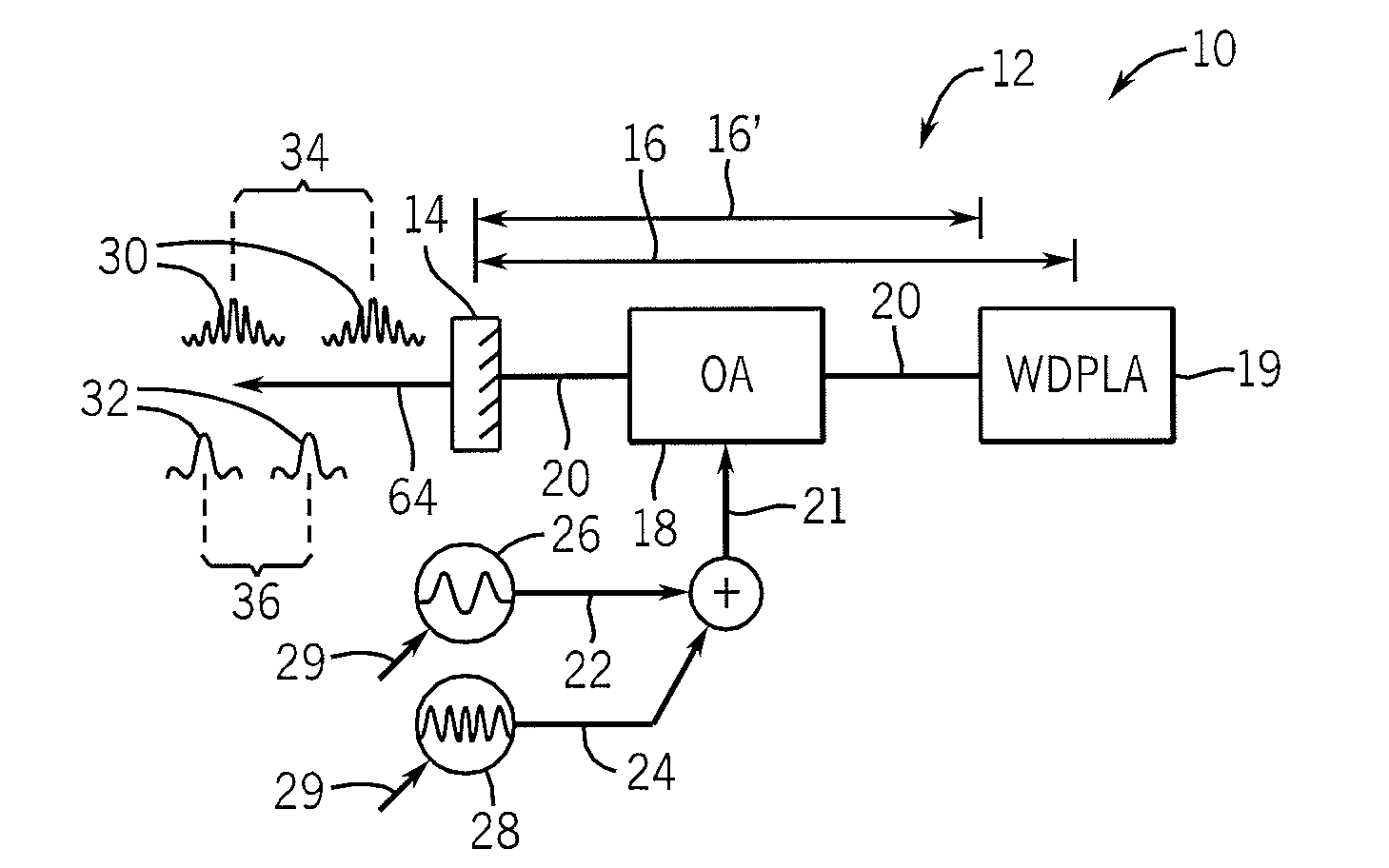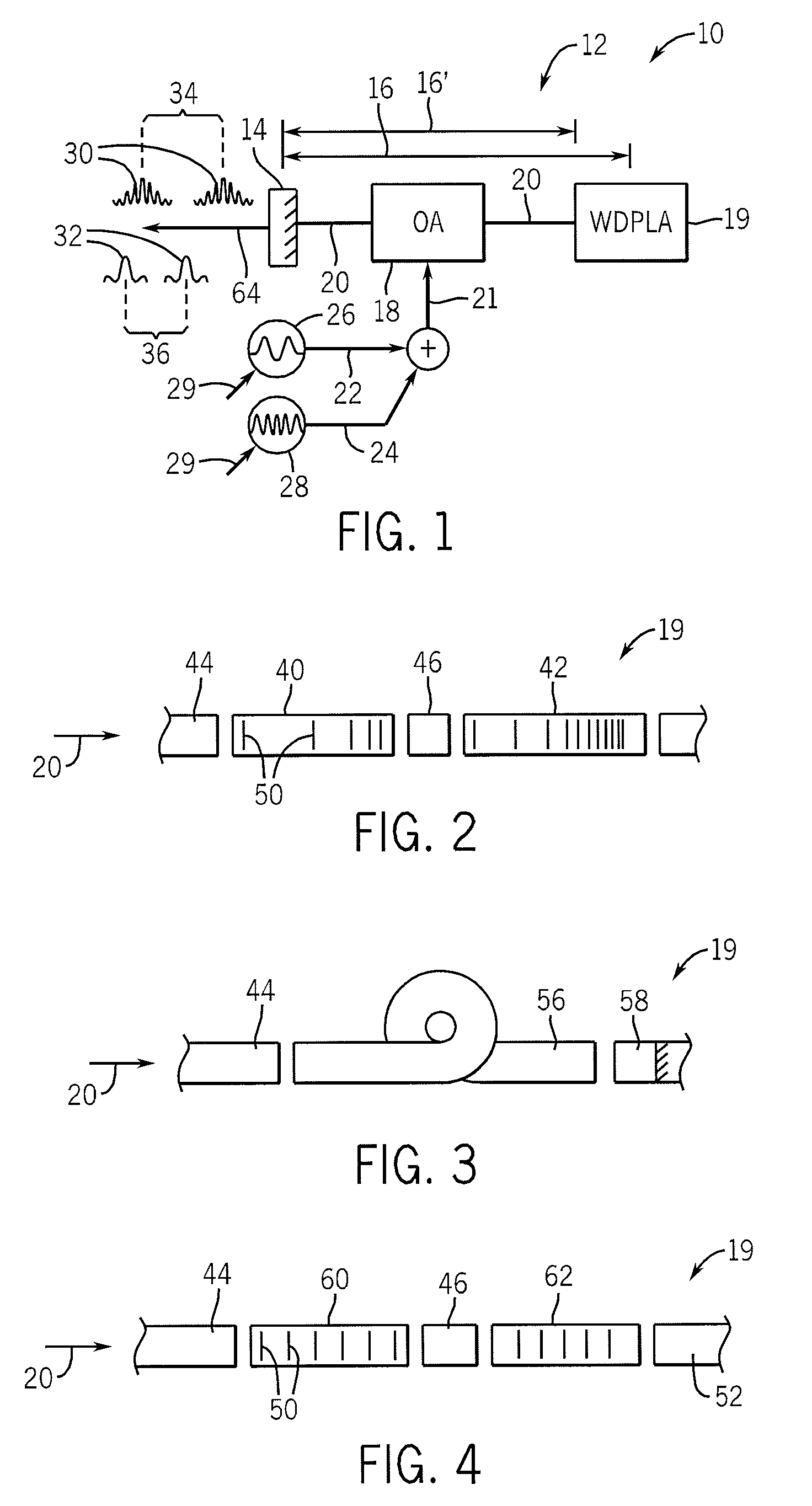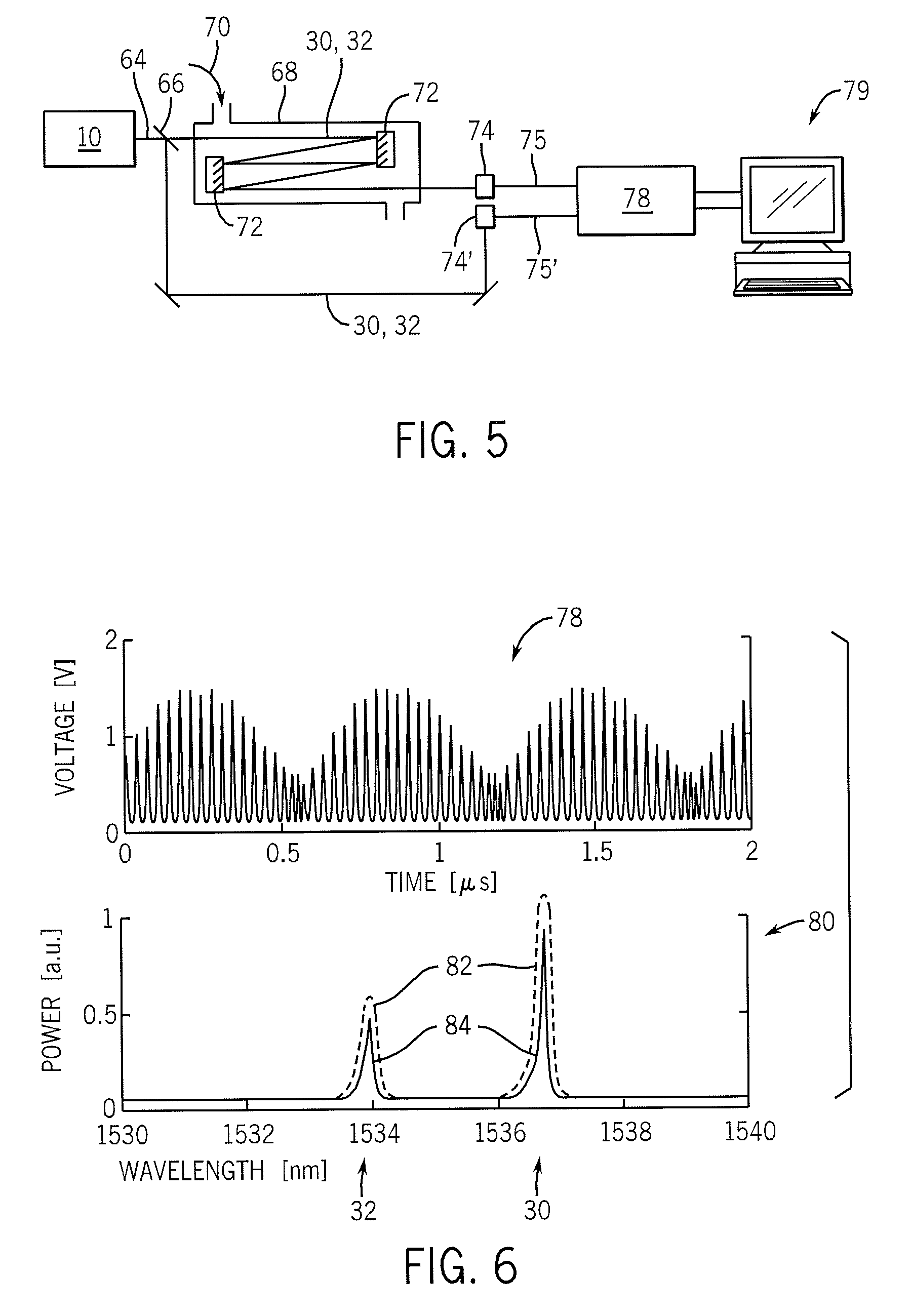Multi-wavelength mode locked laser
a laser and mode locking technology, applied in the field of lasers, can solve the problems of increasing the cost and size of such systems
- Summary
- Abstract
- Description
- Claims
- Application Information
AI Technical Summary
Benefits of technology
Problems solved by technology
Method used
Image
Examples
example 1
[0047]Referring to FIGS. 1 and 4, in a first example, the optical amplifier 18 may be a linear optical amplifier (LOA) incorporating a vertical cavity surface emitting laser (VCSEL), for example the Genoa G111 commercially available from Finisar Corporation of Sunnyvale Calif. (www.finisar.com). Two uniform FBGs 60 and 62 were used having center wavelengths λ1=1533.86 nm and λ2=1536.53 nm with a full width half maximum (FWHM) equal to 0.41 nm and 0.45 nm respectively. Fiber cavity lengths for these frequencies λ1 and λ2 were equal to 10.05 m and 10.61 m respectively. All fibers were single mode fibers.
[0048]The waveform generators 26 and 28 were a DS345 function generator available from Stanford Research Systems, Inc of Sunnyvale, Calif. (www.thinksrs.com) and an Agilent 33250 available from Agilent Technologies, Inc of Santa Clara, Calif., each configured for sinusoidal modulation with a DC offset value ensuring sufficient energy for laser operation
[0049]The periodic signals 22 and...
example 2
[0050]Referring to FIGS. 1 and 2, a single CFBG 40 having a center wavelength of 1546.66 nm and a bandwidth of 0.71 nm was analyzed with respect to tuning. The same optical amplifier 18 described above was driven by a synthesized frequency sweeper commercially available from Hewlett-Packard under the trade designation HP83620A.
[0051]The laser was mode-locked to the 27th harmonic of the round-trip frequency of the output beam. The fiber length of the cavity varied from 9.40 m at an excitation frequency of 293.18 MHz to 9.43 m at an excitation frequency of 292.21 MHz. Thus tuning was achieved from approximately 1,546.5-1,047 nm, almost the full bandwidth of the CFBG 40. The line width of the output pulses varied from approximately 0.07-0.11 nm. Correcting for instrument broadening, a line width of approximately 0.04-0.09 nm can be inferred.
PUM
 Login to View More
Login to View More Abstract
Description
Claims
Application Information
 Login to View More
Login to View More - R&D
- Intellectual Property
- Life Sciences
- Materials
- Tech Scout
- Unparalleled Data Quality
- Higher Quality Content
- 60% Fewer Hallucinations
Browse by: Latest US Patents, China's latest patents, Technical Efficacy Thesaurus, Application Domain, Technology Topic, Popular Technical Reports.
© 2025 PatSnap. All rights reserved.Legal|Privacy policy|Modern Slavery Act Transparency Statement|Sitemap|About US| Contact US: help@patsnap.com



